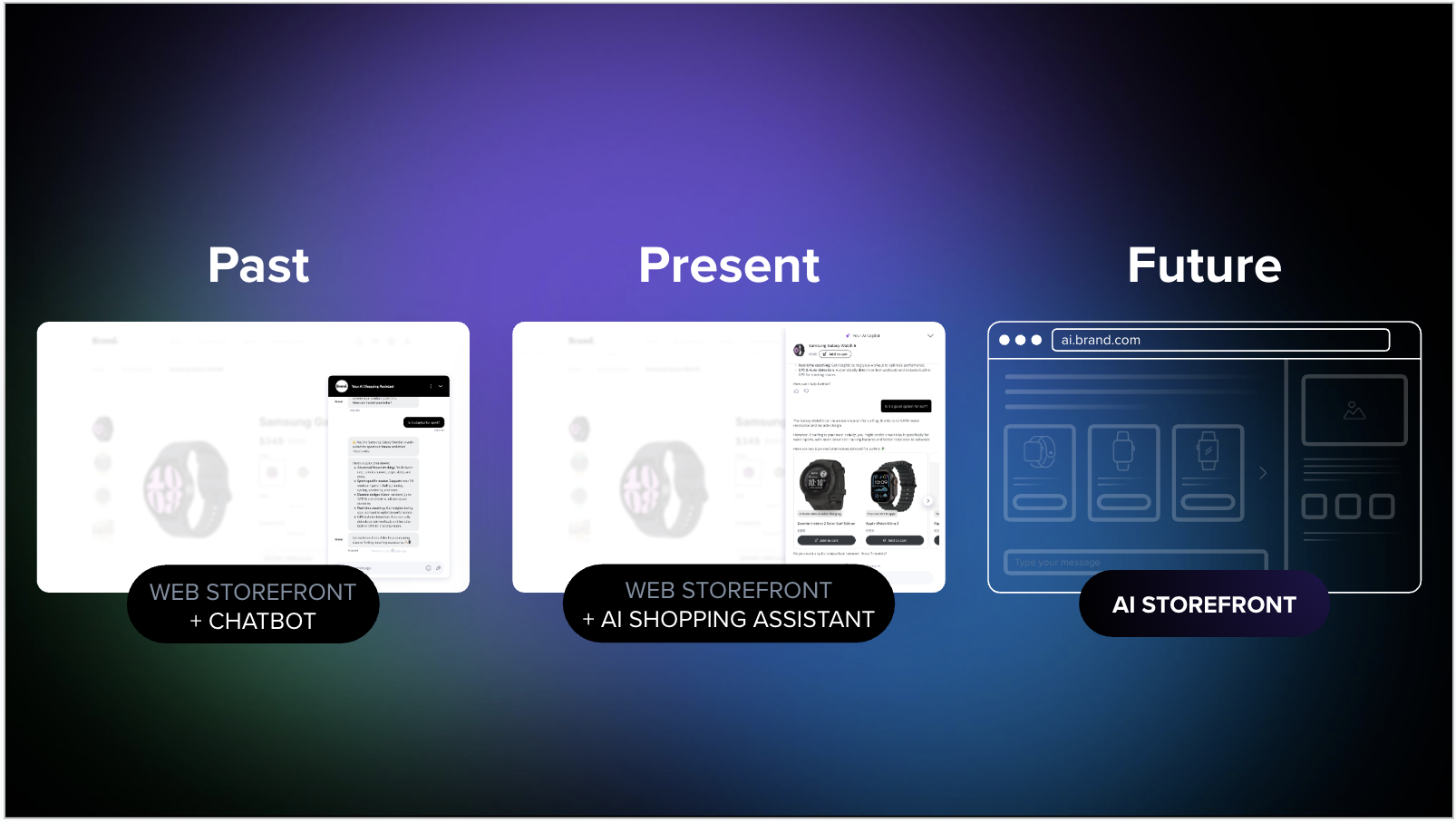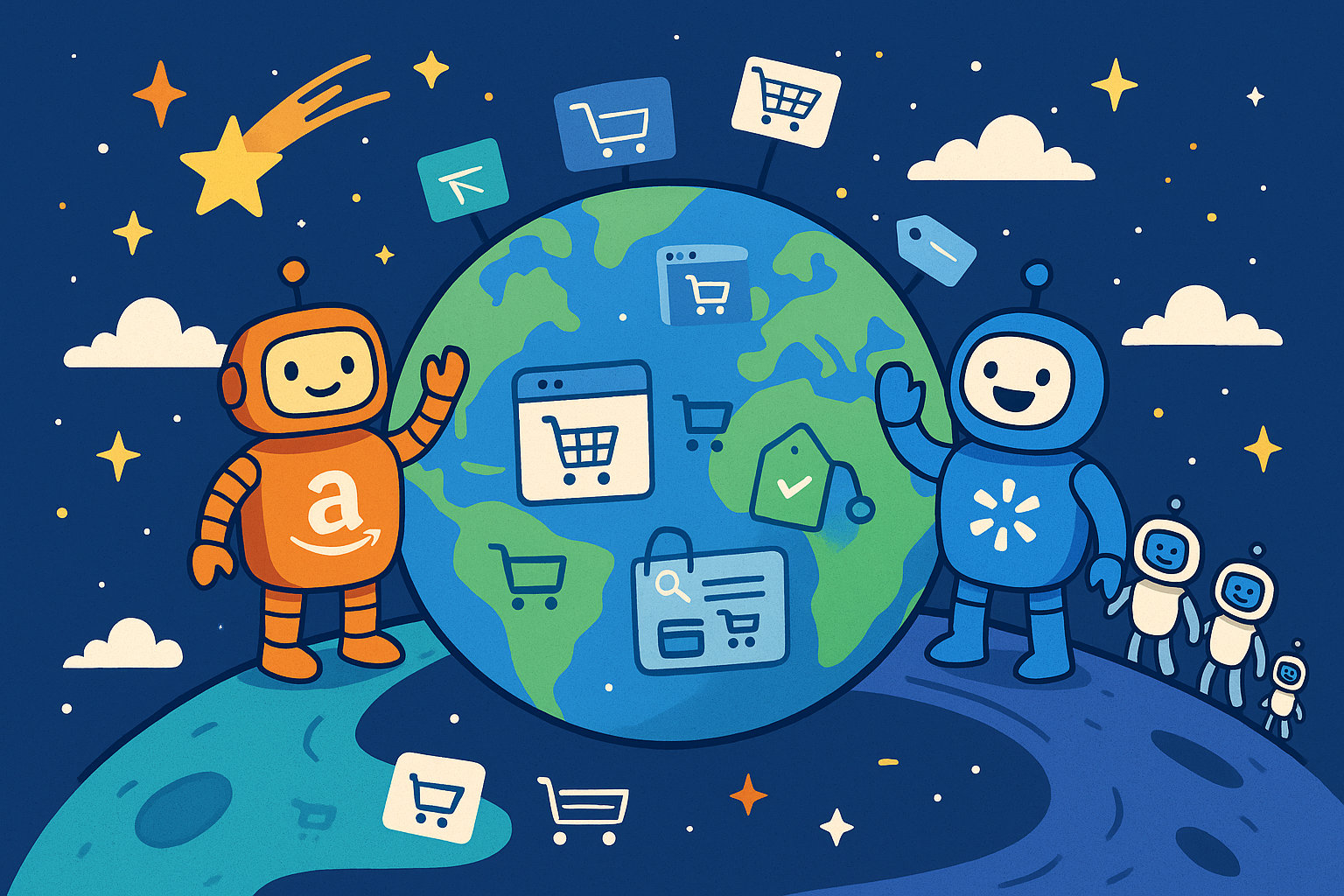Why You Should Integrate Automated Chat Into Your E-Commerce Strategy
iAdvize

Did you know that one out of every six online shoppers uses automated chat software when performing everyday transactions? These platforms are becoming far more than just a means to provide effective customer service solutions. As chatbots become even more mainstream, businesses can reap the growing benefits. Let's take a look at the benefits of automation, as well as how to integrate a chatbot platform into your existing business model.
Modern automation software is a far cry from the basic interfaces that were capable only of providing cookie-cutter responses a handful of years ago. Numerous technological advancements now enable these tools to offer human-like experiences, streamline the online shopping journey, supply personalized recommendations, and reduce in-house costs.
What is Automated Chat?
Definition and Overview
Automated chat is a means by which customers can interact with a business without the need for a human representative. Often labelled as bots, this software is now capable of offering highly personalized support to online shoppers. As responses occur within a fraction of the time required by a human representative, they also provide a sense of user-friendly efficiency that would've been difficult to achieve in the past.
Understanding Chat Automation
To briefly paraphrase the experts at IBM, an automated chat bot uses a series of complex algorithms to generate relevant answers based on queries from a user (or in our case, an online shopper). This is known as generative artificial intelligence (AI). Some of the main functions that chat automation is able to perform include:
- Answering common customer queries
- Providing relevant product recommendations
- Using certain types of phrasing and language, based on the business model
- Offering an additional level of insight to sales agents
- The ability to be integrated with existing CRM systems
So, how does generative AI relate to e-commerce, and the overall online shopping experience? Generative AI creates responses to customer inquiries in natural language, rather than scripted answers or decision trees.
These messages are immediate and exponentially more relevant than previous systems, which were often unable to address questions beyond the limitations of their programming. Simply stated, current automated bots are smarter than ever before, with the ability to transform the entire sales process.
Benefits of Integrating Automated Chat Into Your Customer Service Strategy
Improved Efficiency and Response Times
One advantage of automated chat software is the ability to provide accurate responses when faced with industry-specific questions. For example, European furniture supplier, mömax, required a solution that could handle very unique queries, manage the increased volume of inbound conversations, and answer common questions so that human agents could devote their time to other client-related issues.
After implementing the latest automation software, mömax enjoyed automation rates as high as 71%, and 13% of all their conversions could be attributed to this new approach.
Enhanced Customer Experience
Quick response times and increased efficiency matter little if the responses themselves fall short of customer expectations. Customers expect both accuracy and personalization. Sideshow is a specialty manufacturer and distributor of the most highly sought-after licensed and original collectible products for pop culture enthusiasts.
As they were dealing with a niche target audience, generic answers would hardly satisfy their automation requirements. Once a newer chatbot iteration was integrated within their framework, Sideshow experienced conversion rates eight times higher than with previous software.
Cost Savings and Resource Optimization
A reduction of in-house costs is another advantage that can be attributed to the rapid responses provided by automated chatbots. This is particularly relevant for businesses that are struggling to meet their ongoing customer support requirements due to the volume of inbound queries.
For instance, the French fashion brand IKKS was searching for a way to provide accurate responses without tying up human agents for extended periods of time. They were also concerned with offering appropriate product recommendations to repeat shoppers. After adopting the latest automated chat solutions, IKKS attained an 18% conversion rate for completely automated conversations.
24/7 Support Availability
Online shoppers are no longer concerned with traditional issues such as office hours. They expect assistance 24/7. While humans might not always be available, automated chat software never sleeps, accuracy won't be called into question, and response times don't waiver. All of these qualities will ultimately improve the customer experience and boost brand loyalty.
How to Integrate Automated Chat Into Your Customer Service Strategy
Although the principles outlined above are clear, handling integrations is an entirely different matter. What steps can businesses take to ensure that they make the right decision?
Implementing Live Chat Automation
Following an insightful checklist is the best way forward, as it can help take the guesswork out of the process. Consider these recommendations:
- Highlight the short- and long-term goals of your organization
- Determine what the ideal customer experience represents in terms of your business model and objectives
- Clarify chatbot metrics such as tone of voice, the type of product information, and demographics
- Integrate the software with existing datasets
- Ensure data security, privacy, and compliance with the relevant regulations
- Identify the KPIs that you wish to track, and provide room for further optimization when needed
Designing Effective Chatbots and Automation Workflows
Conversational engagement plays a critical role in this process. Not only must these automation workflows match the needs of the shopper, but they should provide a way to seamlessly integrate human agents back into the loop if additional assistance is needed. AI-powered bots represent the first step of this process.
In the event that these systems are unable to address specific questions, or if the customer simply wishes to speak with a representative, they can be immediately transferred to a human assistant. This represents the difference between a proactive and reactive stance in terms of client engagement.
Training Your Team and Monitoring Performance
Customer service agents should also be familiar with how these systems function and be provided with a means to regularly monitor their performance. This is when integrated reporting suites come into play.
Sales reports, customer feedback, CSAT scores, and turnover are all relevant here. Representatives and teams that can access these details can further hone their skills, more effectively address the needs of their target audience, and focus on continuous quality improvement.
Measuring the Success of Automated Chat Integration
A chatbot is only as effective as the people that keep track of its performance. Unfortunately, some businesses continue to fall short of the mark.
A recent study found that while 78% of online consumers have interacted with a chatbot at least once over the past 12 months, 80% were frustrated with the results. What steps can e-commerce companies take to increase satisfaction rates?
Key Metrics and KPIs
There are several core variables that can be used to determine if an automated chat platform is functioning as it should. Some important considerations should include:
- The automation rate (how many customers are actually engaging with automated chat services)
- The percentage of automated interactions that resulted in conversions
- Initial response times
- Conversation completion rates
- How often the issue/question was resolved
- Customer satisfaction (CSAT) scores
- Positive feedback
- Fallback rates
- Engagement rates (how many shoppers choose to interact with an automated chatbot)
Generative AI chatbots represent the next generation in online sales. Companies that can analyze this information will better understand the strengths of their system and optimize when needed.
Gathering and Utilizing Customer Feedback
Similar to social media channels, it's crucial to obtain feedback from new and existing shoppers whenever possible. This could come in the form of an optional questionnaire at the end of a session, or simply an agent asking if anything could be improved.
This feedback may then be used to make proactive changes. From promoting particularly popular products to simplifying a user interface, or making additional languages available—flexibility is the key to long-term success. While modern automated chat platforms are highly advanced, humans should always monitor their performance, and make adjustments when required.
It's clear to see why generative AI chatbots have taken the e-commerce industry by storm. As this technology continues to evolve, businesses should always strive to remain ahead of the curve. This will ensure customer satisfaction, drive sales, and lead to a higher ROI. In a digital domain increasingly defined by automation, customers expect the latest solutions.

.png)
.png)








